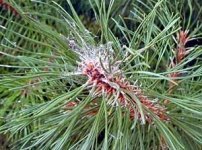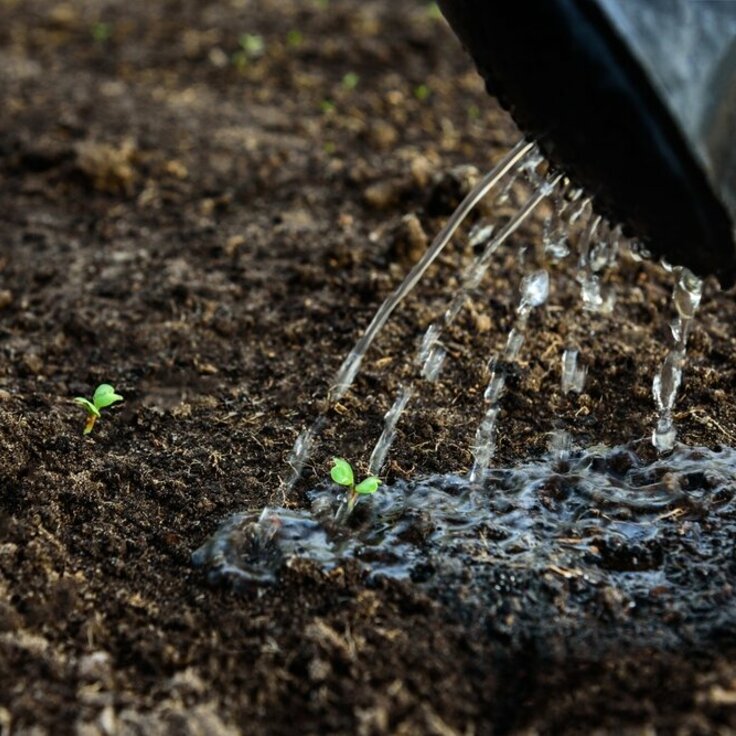Growing Garlic
The ″stinking rose″ is a kitchen essential, beloved by cooks for its piquant flavor and appreciated by gardeners for its ease of cultivation. It's also very productive -- plant a pound of garlic and you'll reap 7 to 10 pounds in return. And fall is the best time to plant it in most parts of the country.
What Kind of Garlic to Buy
It's a good idea to start with bulbs purchased from a garden store or mail-order catalog so you can choose varieties best adapted to your area, rather than planting bulbs from the grocery store. Also, bulbs from the store may have been treated to prevent sprouting.
There are two basic types of garlic to choose from. Softneck garlic has a soft center that does not produce a flower stalk, usually forms multiple layers of cloves around a central core and keeps the best in storage. This is the type of garlic you're most likely to find in your local supermarket. Silverskin and artichoke are the two main types of softneck garlic, and within each type, there are many named varieties. Most are adapted to milder winter areas, but some varieties, such as Inchelium Red, Red Loch, New York White, and Idaho Silverskin, are adapted to colder climates and will thrive in zone 4 or even zone 3. Softneck garlic is the type to grow if you want to make garlic braids.
Hardneck garlic has a hard central flower stem or scape around which fewer, larger cloves are clustered. It is hardier than softneck garlic and is a good choice for Zone 6 and colder areas. There are three main types of hardneck garlic: purple stripe, rocambole, and porcelain. Within these types, there are many named varieties, each with its own particular traits, such as flavor or hardiness.
Elephant garlic is actually a bulbing leek, not a true garlic. It forms large, mild-flavored bulbs with usually only four or so cloves that peel easily.
When to Plant
Fall is garlic planting time. Cloves planted in autumn will produce bigger bulbs for a larger harvest than ones planted in early spring. Plant the cloves from a week or two after the first killing frost up until about six weeks before the ground freezes. Depending on where you are gardening, this could be as early as September or as late as the beginning of December. Once the ground begins to freeze, mulch the bed with straw, weed-free hay, or pine needles spread 4-6 inches deep in northern areas; slightly less deep in milder climates. Bulbs will mature the following summer. If you have a long growing season, you can also plant the cloves in the spring as soon as the ground can be worked. However, the resulting heads will be smaller than those of fall-planted garlic.
How to Plant
Garlic does best in well-drained, fertile soil that is high in organic matter. If your soil is on the heavy side or doesn't drain well, planting in raised beds is a good idea.
Wait until just before planting to separate the garlic bulb into individual cloves, then plant each clove with the pointed end up, leaving the clove's papery covering in place. Choose the largest cloves for the biggest bulbs. In colder areas plant cloves 2-4 inches deep. From Zone 7 south, plant them only 1-2 inches deep. Garlic is great for wide-row growing. Plant a bed 12-36 inches wide with cloves spaced 4-8 inches apart within the bed. Plant elephant garlic cloves 3 inches deep and 8-12 inches apart.
Garlic Care
Once top growth begins again in spring, pull back the mulch from over plants and sidedress plants with a high-nitrogen fertilizer. Keep the soil well watered from spring through early summer. Garlic doesn't tolerate competition from weeds, so maintain mulch between rows to keep weeds down and carefully remove any weeds that do sprout when they are small to avoid damaging garlic's shallow roots. Prune off flower stalks whenever they appear to redirect the plant's energy back to producing a large bulb.
Once the plants begin to bulb up as the leaves start to yellow, cut back on watering, as the bulbs will store better if the soil is drier as they mature.
Harvesting Garlic
Harvest garlic when about three-quarters of the leaves have yellowed. These will be the lower leaves; the upper leaves will be still green. You want to harvest when the bulbs are well-filled out, but before the outer wrapper breaks down and the bulbs begin to split apart. Dig the bulbs carefully with a digging fork rather than pulling them out of the ground and handle them carefully so the outer wrapper stays intact. Let bulbs dry, or cure, for two to three weeks in a warm, airy place out of direct sun until completely dry. Cut the dried tops off, leaving an inch of stem (unless you plan to make braids), brush off any dried soil and trim off the dried roots. Bulbs will keep for quite a while in a dry spot at 40-60 degrees F.
You can let the scapes of hardneck garlic bulbs mature to form top-setting bulbils or small bulbs at the top of the scapes. Ten to fifteen bulbils form and can be harvested and planted, but the bulbs that form from them will be small.
The leaves of garlic can be harvested for their mild garlic flavor and used in the kitchen like you'd use chives. But cut them sparingly, as taking too many leaves will result in smaller garlic bulbs. Or you can establish a separate bed for garlic greens, planting the small cloves you might otherwise discard. Let these bulbs remain in the ground from year to year to produce greens in spring and early summer. The scapes or flower stalks can be cut and used like the leaves as well.
For more information see The National Gardening Association








